
Jeju Province,officially Jeju Special Self-Governing Province,is the southernmost province of the Republic of Korea (ROK),consisting of 8 inhabited and 55 uninhabited islands,including Mara Island,U Island,the Chuja Archipelago,and the country's largest island Jeju Island. The province is located in the Korea Strait,with the Korean Peninsula to the northwest,Japan to the east,and China to the west. The province has two cities:the capital Jeju City,located on the northern half of the island and Seogwipo,located on the southern half of the island. The island is home to the shield volcano Hallasan,the highest point in South Korea. Jeju and Korean are the official languages of the province,and the vast majority of residents are bilingual in both languages.
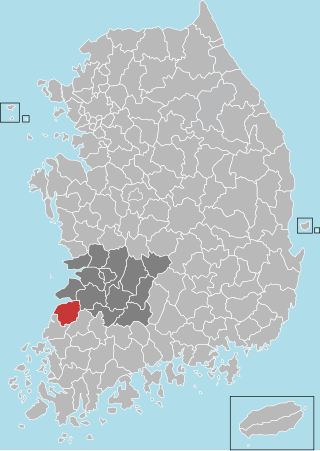
Gochang County (Gochang-gun) is a county in North Jeolla Province,South Korea. It is a rural area,and is home to only one institution of higher education:Gochang Polytechnic College.
South Korea is made up of 17 first-tier administrative divisions:6 metropolitan cities,1 special city,1 special self-governing city,and 9 provinces,including two special self-governing provinces. These are further subdivided into a variety of smaller entities,including cities,counties,districts,towns,townships,neighborhoods and villages.

Seogwipo is the second-largest city on Jeju Island,settled on a rocky volcanic coastline in the southern part of Jeju Province,South Korea. In July 2006,Seogwipo's boundaries were expanded to include the entire southern half of Jeju island. A UNESCO World Heritage Site and 2002 FIFA World Cup host,it had a population of 155,691 as of December 31,2011.
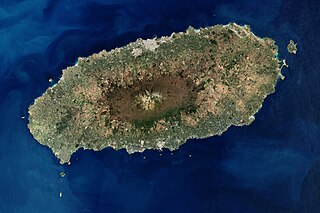
Jeju Island is South Korea's largest island,covering an area of 1,833.2 km2 (707.8 sq mi),which is 1.83 percent of the total area of the country. It is also the most populous island in the Republic of Korea;at the end of September 2020,the total resident registration population of Jeju Province is 672,948,of which 4,000 of the total provincial population reside on outlying islands such as the Chuja Islands and Udo Island. The total area of the Jeju Special Self-Governing Province is 1,849 km2 (714 sq mi).
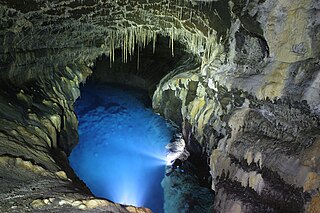
The Jeju Volcanic Island and Lava Tubes is a World Heritage Site in South Korea. It was inscribed as one of the UNESCO World Heritage Sites in 2007 because of the Geomunoreum Lava Tube System and the exhibition of diverse and accessible volcanic features which are considered to demonstrate a distinctive and valuable contribution to the understanding of global volcanism.

Cheonjeyeon Waterfall is a three-tier waterfall located on Jeju Island. Cold water flows out of the ceiling of a cave to make the waterfall. Between the precipice of the waterfall and the lower clay layer,water springs out. In first cascade,the cliff is 22 m (72 ft) high and the water falls into Cheonjeyeon pond which is 21 m (69 ft) deep. From there,the water goes to the second waterfall and falls 30 m (98 ft) and continues to the third waterfall. Eventually,the water reaches the ocean. Cheonjeyeon means Pond of the Emperor of Heaven. According to Korean legend,seven nymphs would descend from the heavens at night and bathe in the waterfall's pond. The falls are a popular tourist attraction on Jeju-do.

Gotjawal Forest is a naturally formed forest located on the middle slopes of Halla Mountain,Jeju Island in South Korea. It covers the rocky area of ʻaʻāon Jeju Island off the southwestern coast of South Korea. Due to the geographical feature,the region remains largely undisturbed by people. The Gotjawal Forest is an enclave of the Southern Korea evergreen forests ecoregion,and is a favorite place of the Jeju locals.
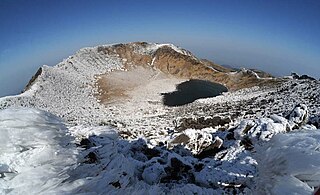
Hallasan National Park is located in the province of Jeju-do,South Korea. It was designated as the 9th national park in 1970. It features the highest mountain in South Korea,the shield volcano Hallasan on Jeju Island. It was designated a UNESCO Biosphere Reserve in 2002,and a World Heritage Site in 2007.

Gruta das Torres,is a lava cave,a geological formation of volcanic origin formed from the flow and cooling of subterranean magma rivers. This formation is located outside the parish of Criação Velha,in the municipality of Madalena,on the western flanks of the island of Pico. The cave system formed from a series of pāhoehoe lava flows which originating from the Cabeço Bravo parasitic cone about 500 to 1500 years ago. The caves are a group of interconnected lava tubes between 0.5–22 metres (2–72 ft) width,created from both pāhoehoe and ʻaʻā types of lavas generated during different geological periods. It has a height between 1.1 and 15 metres (3.6–49 ft) and is located at an elevation of 300 metres (980 ft). With an estimated length of over 5.2 km (3.2 mi) it is the longest lava cave in the Azores. Access to the cave was managed by the Mountaineering Association. Starting in 2011,AZORINA,SA took over the management and organization of the cave.
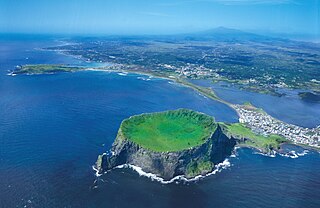
Seongsan Ilchulbong,also called ‘Sunrise Peak’,is an archetypal tuff cone formed by hydrovolcanic eruptions upon a shallow seabed about 5 thousand years ago. Situated on the eastern seaboard of Jeju Island and said to resemble a gigantic ancient castle,this tuff cone is 182 meters high,has a preserved bowl-like crater and also displays diverse inner structures resulting from the sea cliff. These features are considered to be of geologic worth,providing information on eruptive and depositional processes of hydromagmatic volcanoes worldwide as well as past volcanic activity of Seongsan Ilchulbong itself.
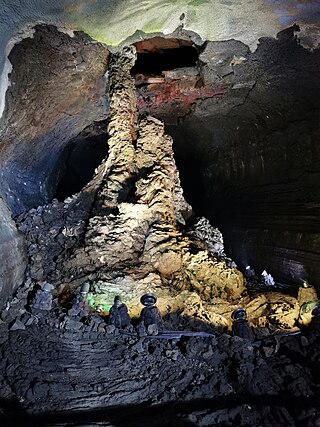
Manjanggul is a lava tube located in Gimnyeong-ri,Gujwaeup,Jeju City,South Korea. At up to 23 metres (75') wide,30 metres (100') high and 8.928 km long,it is the 12th-longest lava tube in the world and the second longest on Jeju island. It is regarded as having significant scientific and heritage value,owing to its excellent condition of preservation despite its age of formation.
The Gimnyeonggul Lava Tube,located in Donggimnyeong-ri,Gujwa-eup,Jeju City,is one of the World Heritage Sites in South Korea.
Mt. Songak (Korean: 송악산) is a volcano on Jeju Island which has double craters and a parasitic cone. Crater 1 is about 500 m in diameter,1.7 km in circumference. Crater 2,the mouth of the volcano in Crater 1,is about 400 m in diameter,69 m in depth and leans vertically.
Jeju Oreum is a rising small defunct volcano in the Jeju Island in South Korea. The word "oreum" is the Jeju dialect which implies the parasitic cone [Hangul:측화산,Hanja:側火山and the origin of the word "oreum" is a noun type of the word "climb". The name refers to a small volcano within a main volcanic crater in Jeju-do and is usually applied to the hill in Jeju. The cinder cone,symbolizing the oreum,is a typical form of Jeju Oreum. The Oreum is divided into pyroclastic cone,tuff cone and lava dome depending on the nature of volcanic eruptions. The pyroclastic cones are volcanic bodies formed by the accumulation of volcanic clusters released into the air by an explosive eruption.

The Citrus Museum,also known as Seogwipo Citrus Museum is a public museum which opened on Jeju,South Korea,in 2005,dedicated to Jeju's speciality product,the local citrus. It is managed and operated by Seogwipo city government. The museum displays items related to the history and culture of citrus and the citrus industry.
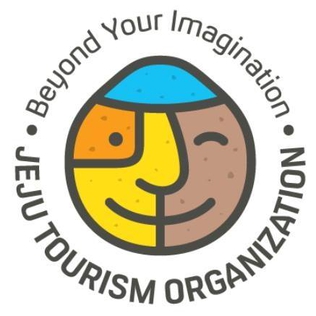
The Jeju Tourism Organization (JTO) is a public company associated with Jeju Special Self-Governing Province in the Republic of Korea. It is tasked with promoting Jeju Island's tourism industry domestically and internationally.













